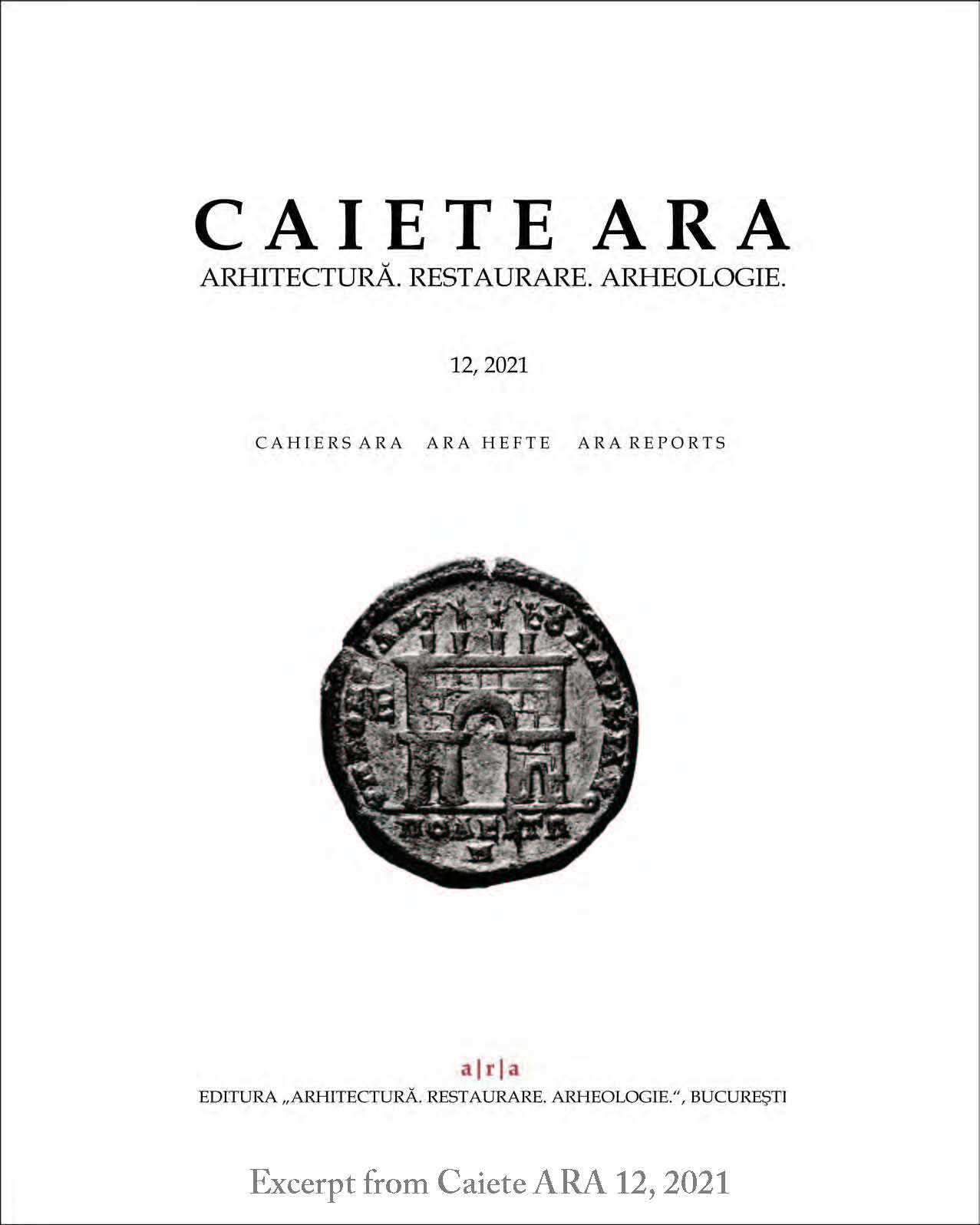Contribution to an Archaeology of the Ottoman Heritage in Romania: The Muslim Cemetery in Lanurile (Dobruja)
Contribution to an Archaeology of the Ottoman Heritage in Romania: The Muslim Cemetery in Lanurile (Dobruja)
Author(s): Radu-Alexandru Dragoman, Sorin Marghitu-Oanță, Tiberiu VasilescuSubject(s): Archaeology, Local History / Microhistory, Social history
Published by: Editura "Arhitectură. Restaurare. Arheologie"
Keywords: Ottoman heritage; Muslim cemetery; archaeology; memory; Lanurile; Bărăganu; Dobruja; Romania;
Summary/Abstract: Despite recent increasing interest in the Ottoman materiality in Romania, local archaeological research continues to ignore its long biography, artificially separating the sites and objects from the present. No less problematic is the fact that heritage policies focus solely on the more “famous” Ottoman monuments built by the elites, while ignoring the “modest” architecture found, for example, in rural areas. In order to redress these shortcomings, this study looks at the long biography (from the Ottoman period up to the present day) of the Muslim cemetery in Lanurile in rural Dobruja (Bărăganu commune, Constanţa County), analysing it in relation to other material elements from the neighbouring village of Bărăganu. Ottoman documents mention these two villages by the names Osman-Facı and Ebeköyü, both being inhabited by Turks and Tatars and both part of the kaza of Mangalia. The two villages were renamed Bărăganu and Lanurile, respectively, after the inclusion of Dobruja in the Romanian state in 1878. Gradually – in particular during the 1970s and, increasingly, after 1990 – the inhabitants of these villages (Romanians and Turks/Tatars) began to migrate to nearby towns and cities (Basarabi, Medgidia and Constanţa) or to Turkey (in the case of Turks and Tatars). According to local testimony, this migration occurred simultaneously with the settlement in Bărăganu and Lanurile of many families from the Moldavia region. As a result of this massive depopulation, the Muslim cemeteries are the only remaining material legacy of the villages’ Ottoman past. Lanurile cemetery in particular reflects a genealogical depth (through the extensive and dense distribution of funerary monuments), an aspiration to enduring memory (through the monumentality and durability of the funerary stelae) and an image of eternity (through the monotony of the stones planted in the ground). This funerary space is at one and the same time a monument to a disappeared community, a necropolis in the process of becoming an archaeological site and still-functioning cemetery with a long biography. The present study thus seeks to examine the relationships between the materiality of the Ottoman heritage, the material memory of the Turkish and Tatar communities, local commemorative practices, and the social effects of modernity.
Journal: Caiete ARA
- Issue Year: 2021
- Issue No: 12
- Page Range: 115-134
- Page Count: 20
- Language: English
- Content File-PDF

